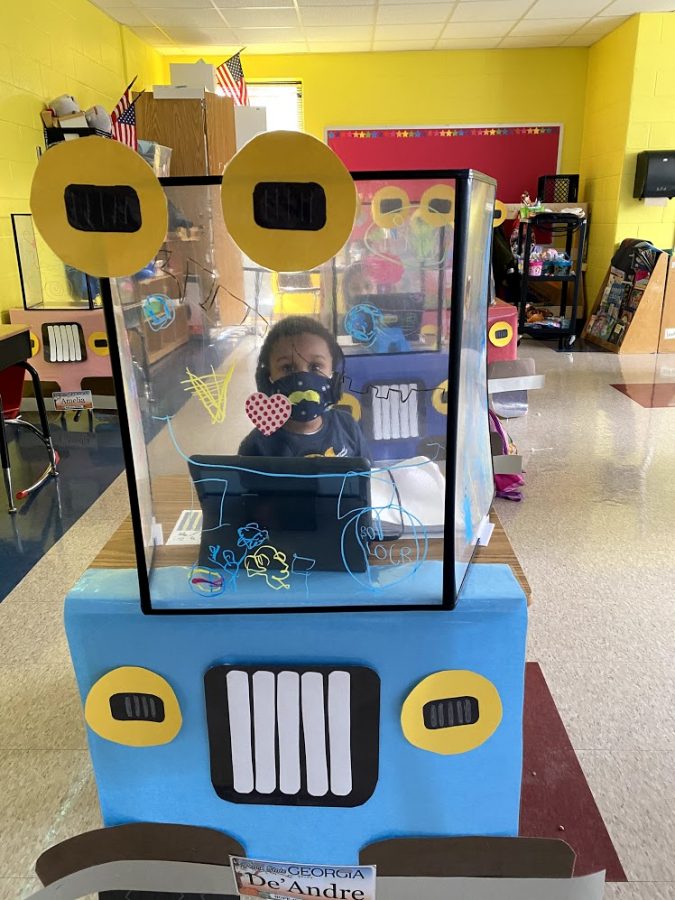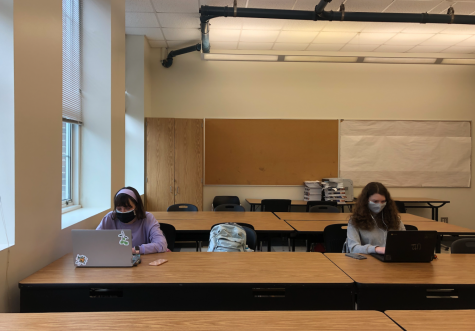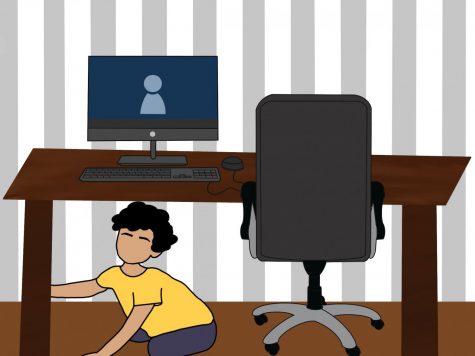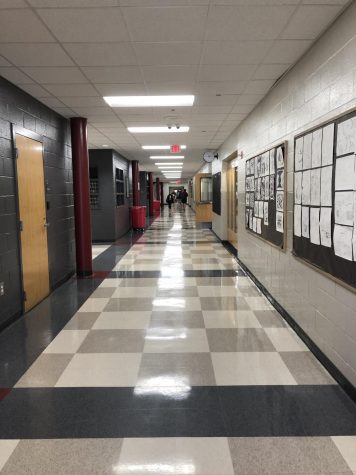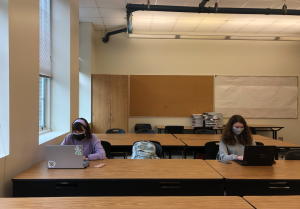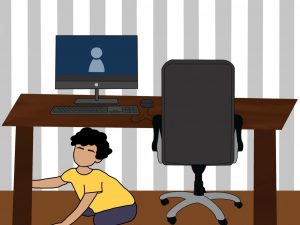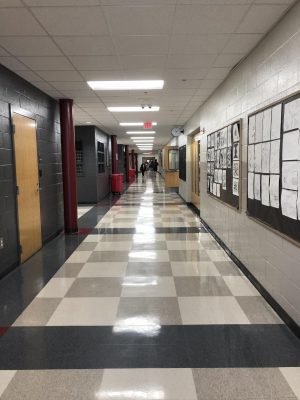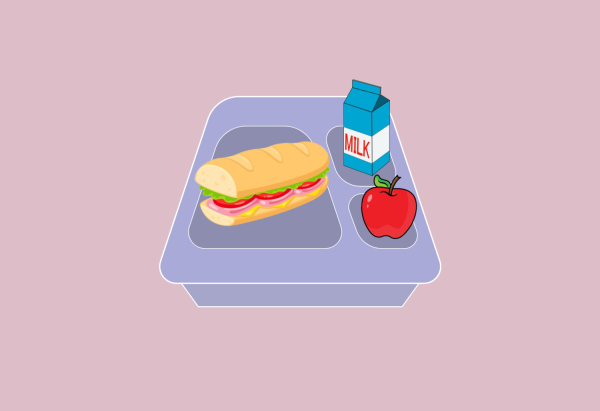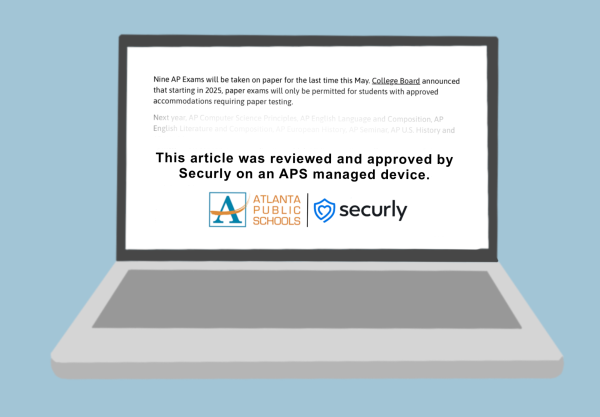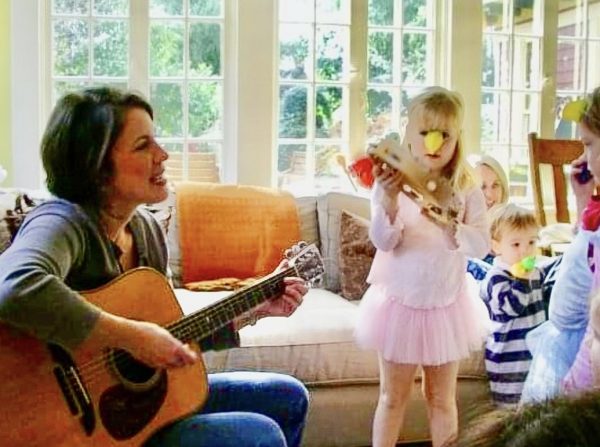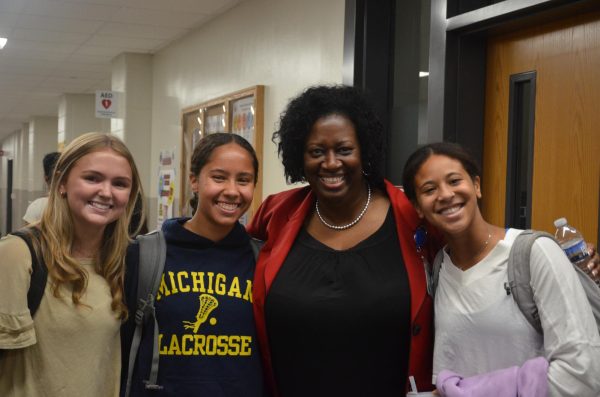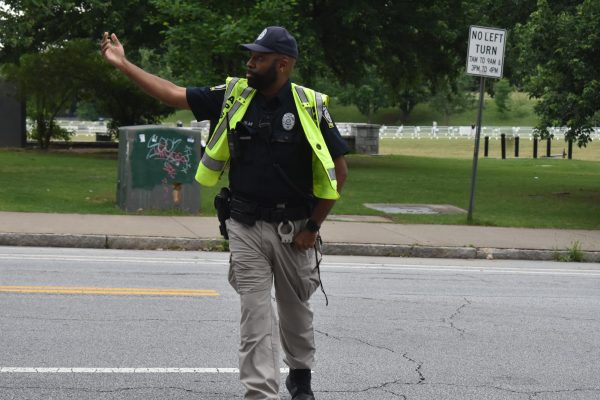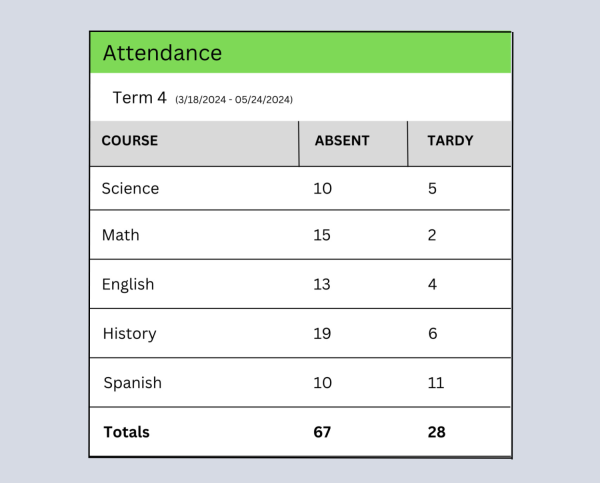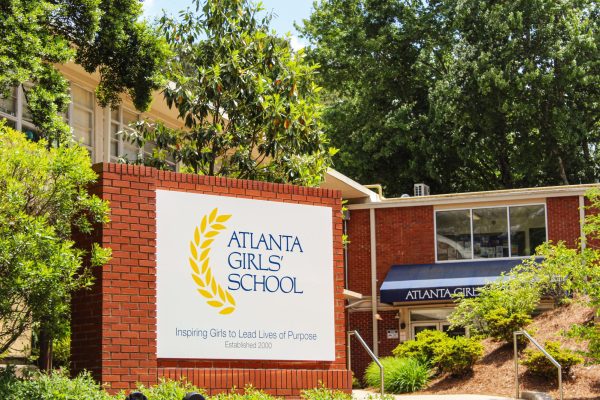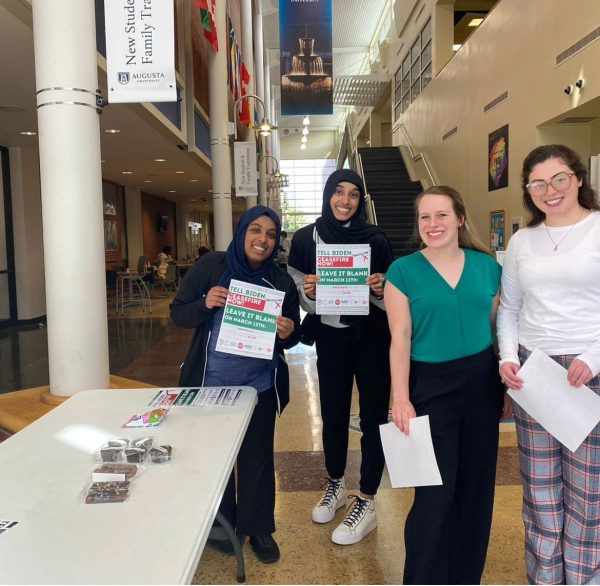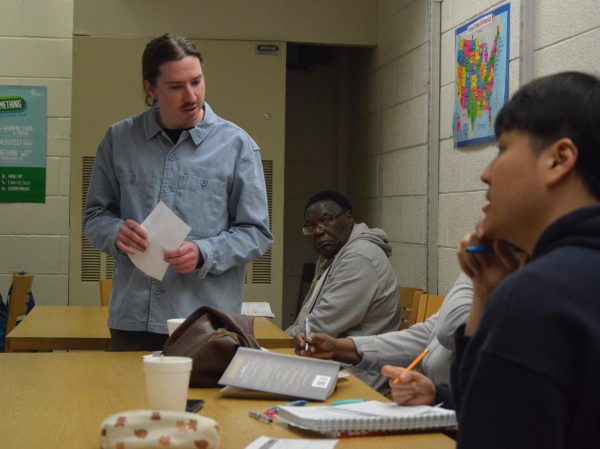Cluster elementary schoolers adapt to in-person learning
DeAndre Mahone Jr., a kindergartener at Hope Hill Elementary school, works at his classroom desk. His teacher decorated her students’ desk shields like cars.
For the past month and a half, the sound of car doors being slammed shut in carpool lines returned for the first time in almost a year as parents dropped their children off at elementary schools across the Grady cluster.
Now with nearly two months of virtual school under their belts, teachers have assessed the effect online school has had on their students.
Catherine Robinson, a fifth-grade teacher at Mary Lin Elementary school, is teaching students virtually and in-person.
“Two-thirds of my class is in-person, and I think it’s been great for them,” Robinson said. “When they walked in [on their first day in-person]… they reminded me of the dry flat pop-up sponges at Trader Joe’s. But when I put a math problem on the board for distance partners to solve, the class exploded with lively passionate discussion.”
At Mary Lin, Hope Hill and Springdale Park elementary schools, teachers are teaching virtual and in-person students at the same time. At Morningside Elementary School, in-person and virtual students are taught separately.
Robinson believes simultaneous teaching is “awfully challenging,” but recognizes the benefits of having students in the building.
“Assignments that required me to have individual chats in breakout rooms, send emails, reminders, phone calls, were magically doable in the classroom,” Robinson said. “I can also walk around the room and very quickly scan what the students know and what remains confusing and address it in a much faster and more individual way.”
Due to the necessary precautions taken to ensure safety during in-person learning, classrooms don’t look the same as they did before the pandemic.
“Now students are at individual desks six feet apart,” Robinson said. “They will talk in partners or in groups, but the partnerships and groupings are more
strategic in terms of geography and are more limiting. There’s no more shoulder partners, and there’s no more whisper talking because of the masks.”
Despite the changes, Morningside Elementary School fourth-grader Henry Kelly has enjoyed being in a classroom again, as he can “talk to his friends” and “actually see [his teacher], without the glitchiness of the computer.” Henry’s mother, Hayden Kelly, sent him back to school even though he was learning well virtually.
“He was engaged,” Kelly said. “He was always there. I don’t think he was messing around in class, but then, by October, it had just taken a major toll on him psychologically. He did fine academically, but he was sad.”
Kelly teaches at Cliff Valley School, an Atlanta private school. When deciding whether or not to send Henry back, she drew on her personal experience teaching in-person during the pandemic.
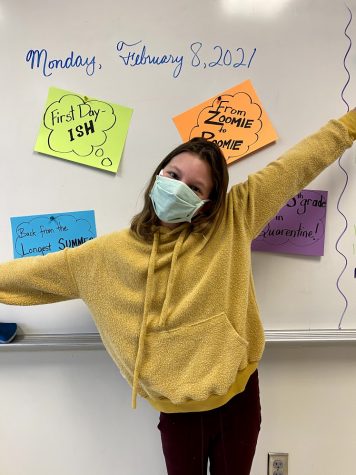
“I’ve been teaching since August,” Kelly said. “At my school, which is smaller, we have the same protocols in place of small class sizes, mask-wearing and hand-washing. We have had no spread. My other son has been going to school since August … and as far as I know, his school had … one instance of classroom spread, but that was it. It’s very rare for [Covid-19] to spread in a school as far as my experience.”
Susanna Roberts is the parent and community liaison at Hope-Hill Elementary School. Many parents at Hope-Hill were reluctant to send their students in-person.
“We are the [elementary] school [in the Grady Cluster] with the majority of African-American students,” Roberts said. “The pandemic has really, really hit our community very hard. A lot of our staff and students have lost family members during the pandemic. We have a large portion who have chosen to stay home because this pandemic affects people of color and the economically disadvantaged a lot differently than it does other people in our community. And because of that, we have a very small group of kids back.”
Roberts praised elementary school teachers for their support to their students.
“Because of [how Covid-19 has hit our community], almost all of our teachers are back, because our teachers are extremely dedicated and care deeply for our kids,” Roberts said. “So, even when they were nervous [about Covid-19 risk], most of them came back.”
Hope-Hill was the only school in Atlanta Public Schools operating a learning pod in the fall. The school partnered with Wheat Street Baptist Church to provide a place for up to 30 students to learn virtually in a supervised environment.
“We had our own devices and hotspots, and they had their own learning pod there,” Roberts said. “And it worked perfectly.”
Now that elementary schools have begun in-person learning, the pod has shut down and those students have returned to school. Hope-Hill’s administration has relied on donors and the school’s “tight community” to keep students and staff safe.
“Ms. [Maureen] Wheeler, our principal, has gone above and beyond with our foundation to really provide as much support and safety measures as possible,” Roberts said. “Every single one of our kids has a desk shield; all of our teachers have desk shields; Wheat Street Baptist Church has come in and given us extra PPE … We were provided air purifiers for our classrooms where windows didn’t open up.”
At Mary Lin, students are adapting to Covid-19 mitigation strategies well, according to Robinson.
“For the students participating this quarter, I think it’s going very well,” Robinson said. “Some of the logistics regarding arrival, lunch, dismissal and recess have been worked out with really good planning by thoughtful people at our school level, and students have stepped up with the new protocols.”
Though school is different, students, such as Henry, enjoy being back.
“He’s so happy,” Kelly said. “At the end of the first week, when I picked him up, he said ‘I used to look forward to the weekends, but now I don’t want the weekends to come, I want to have school on the weekends.’”
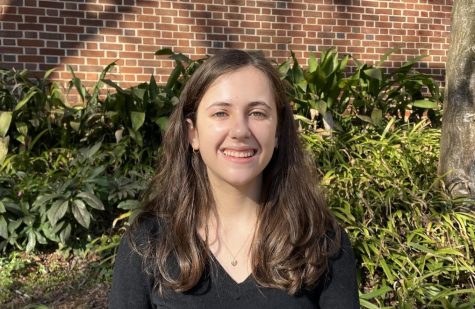
Anna Rachwalski is a senior and this is her third year writing for the Southerner. Outside of the newspaper, she is president of the Quiz Bowl team, is...

